A Tale of Two Cities
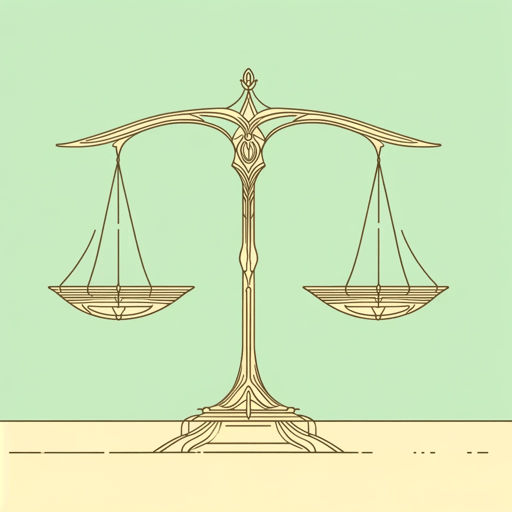
118 pages • 3 hours read
A modern alternative to SparkNotes and CliffsNotes, SuperSummary offers high-quality Study Guides with detailed chapter summaries and analysis of major themes, characters, and more.
Chapter Summaries & Analyses
Book 1, Chapters 1-3
Book 1, Chapters 4-6
Book 2, Chapters 1-3
Book 2, Chapters 4-6
Book 2, Chapters 7-9
Book 2, Chapters 10-13
Book 2, Chapters 14-16
Book 2, Chapters 17-20
Book 2, Chapters 21-24
Book 3, Chapters 1-5
Book 3, Chapters 6-9
Book 3, Chapters 10-12
Book 3, Chapters 13-15
Character Analysis
Symbols & Motifs
Important Quotes
Essay Topics
Discussion Questions

Summary and Study Guide
A Tale of Two Cities , published in 1859, is a historical drama written by Charles Dickens. The backdrop of the novel takes place in London and Paris prior to the French Revolution. The novel, told in three parts, has been adapted into numerous productions for film, theater, radio, and television.
In 1775, a banker named Jarvis Lorry travels to Dover, where he meets a young, half-French woman named Lucie Manette . Together, the pair travel to Paris to recover her father, Alexandre Manette. Once a successful doctor, Manette was, for unknown reasons, imprisoned 18 years ago in the infamous Bastille prison. He has now been released and is in the care of a former servant named Ernest Defarge , who now runs a wine-shop in the impoverished Saint Antoine district of Paris. Doctor Manette’s long imprisonment has left him in a bad psychological state; he is largely unaware of his surroundings and constantly busies himself making shoes. His daughter’s arrival seems to spark some signs of recognition in him, however, and the group departs for England.
Get access to this full Study Guide and much more!
- 7,400+ In-Depth Study Guides
- 4,950+ Quick-Read Plot Summaries
- Downloadable PDFs
Five years later, Lucie and Manette (now largely recovered) are witnesses in a treason case in London. The defendant is a young Frenchman named Charles Darnay, whom they initially met on the crossing from Calais. It initially seems likely that Darnay will be convicted of being a French spy, but at the last moment Darnay’s legal team asks whether Darnay might have been misidentified by a witness. To prove the plausibility of this, one of the lawyers—a man named Sydney Carton—stands up, revealing himself to look very much like Darnay.
Over the next several months, Darnay and Carton pay several visits to the Manettes at their London home; both men fall in love with Lucie, but where Darnay is hardworking, courteous, and noble, Carton is a cynical and depressed alcoholic. Darnay and Lucie eventually become engaged, while Carton, in confessing his love for Lucie, swears that he would give his life to keep her and those she loves safe.
The SuperSummary difference
- 8x more resources than SparkNotes and CliffsNotes combined
- Study Guides you won ' t find anywhere else
- 100+ new titles every month
Meanwhile, change is underway in France. Shortly after his trial, Darnay had visited his uncle, who is revealed to be a corrupt and cruel nobleman: the Marquis St. Evrémonde . On the night of Darnay’s visit, however, the Marquis was killed by the father of a peasant boy he had run over with his carriage earlier that day. The man—Gaspard—is arrested and executed, but the events surrounding the murder generate further interest in a revolutionary society headed by Defarge and his wife Thérèse.
Darnay and Lucie marry, with Doctor Manette’s permission, although Manette suffers a brief relapse after learning Darnay’s true name. Several years pass in domestic bliss, and Darnay and Lucie have a daughter (also named Lucie). By the time the child is 6 events have come to a head in France; led by the Defarges, the French peasantry storm the Bastille and execute its guards. More violence quickly follows, with the killing of a government official and the arson of the Marquis’s former mansion.
Three years after the French Revolution begins, Darnay receives a letter from a man named Gabelle , whom he had entrusted with the disposal of the Evrémonde property after Darnay himself renounced it. Gabelle is now accused of aiding an “emigrant”—an aristocrat who has fled France—and asks Darnay to come to Paris and speak for him. Darnay, trusting in his record of sympathy with the French peasantry, agrees. When he arrives in Paris, however, he is arrested and placed in La Force prison.
Lucie and Doctor Manette quickly follow Darnay to France; Manette’s imprisonment under the French monarchy has made him a national celebrity there, and he hopes to use this public sympathy to secure Darnay’s release. Even as France descends deeper into violence, it appears that Manette may be successful; a little over a year after his initial arrest, Darnay appears in court, and Manette’s testimony on his behalf secures his acquittal. Later that night, however, Darnay is re-arrested. At his trial the next day, a statement written by Manette during his imprisonment is read aloud: it describes how Manette was imprisoned by Darnay’s uncle and father because he had treated (and consequently knew about) a young peasant woman raped by one of the Evrémonde brothers, and a boy (her brother) who was fatally injured trying to defend her. These two victims of the Evrémondes were Madame Defarge’s older siblings, and their deaths are what have made her so bitter and vengeful.
Darnay is sentenced to death, and even Manette proves powerless to save him; his attempts to speak to those in power only cause him to relapse into his traumatized state. In the meantime, however, Carton has arrived in Paris and devised a plan. Carton instructs Lorry (in Paris attending to his bank’s business) to ensure that Lucie, her father, and her child leave France the day of the execution; Madame Defarge will seek revenge on the rest of Darnay’s family next. He also entrusts his own travel papers to Lorry.
Carton successfully blackmails one of Darnay’s jailers (whom he knows to be an English spy) into allowing him to see Darnay. Once inside the cell, he drugs Darnay and takes his place, while Darnay himself, in the guise of Carton, leaves Paris with his family and Lorry. Belatedly, Madame Defarge arrives at the Manettes’ former Paris residence hoping to find and arrest Lucie, only to be killed in a struggle with Miss Pross , Lucie’s devoted maid. Meanwhile, Carton is taken to the guillotine in Darnay’s place. After comforting a young seamstress condemned alongside him, Carton mounts the scaffold, finally at peace with himself and his life.

Don't Miss Out!
Access Study Guide Now
Related Titles
By Charles Dickens
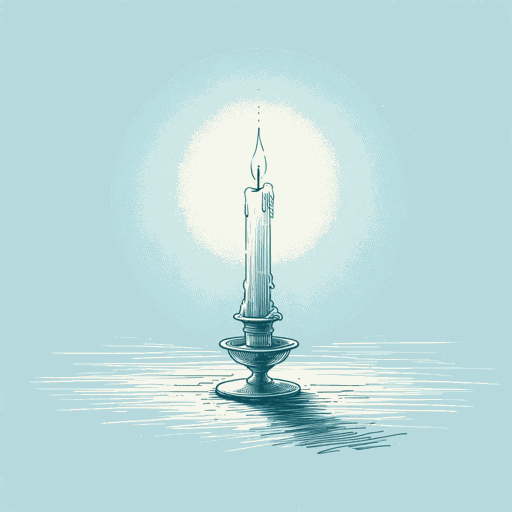
A Christmas Carol
Charles Dickens

Barnaby Rudge: A Tale of the Riots of Eighty
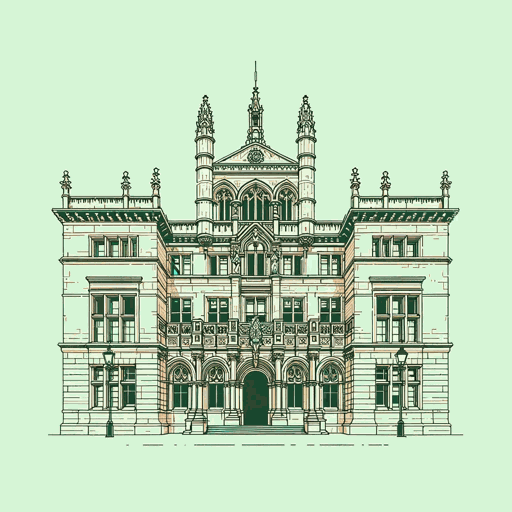
Bleak House

David Copperfield

Dombey and Son
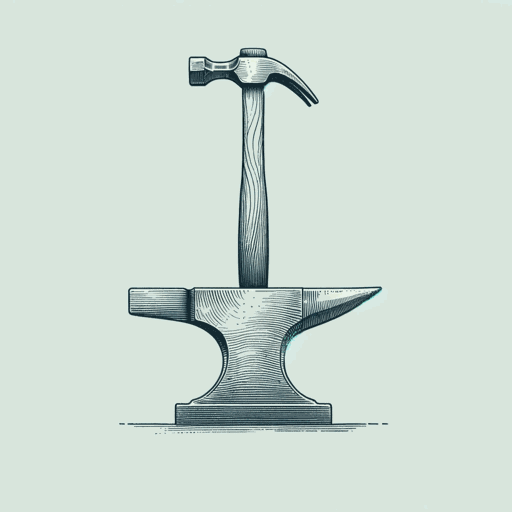
Great Expectations

Little Dorrit

Martin Chuzzlewit

Nicholas Nickleby

Oliver Twist

Our Mutual Friend
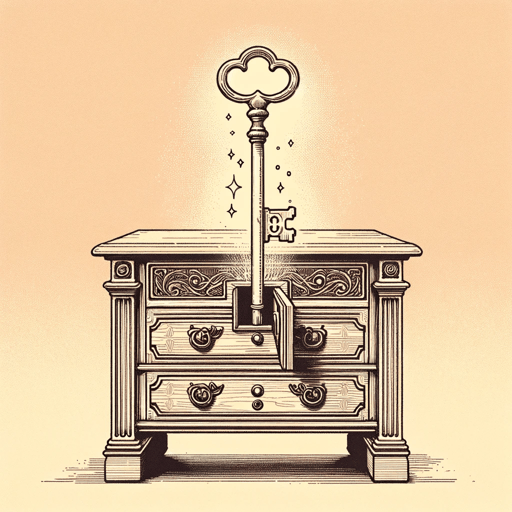
Pickwick Papers

The Mystery of Edwin Drood
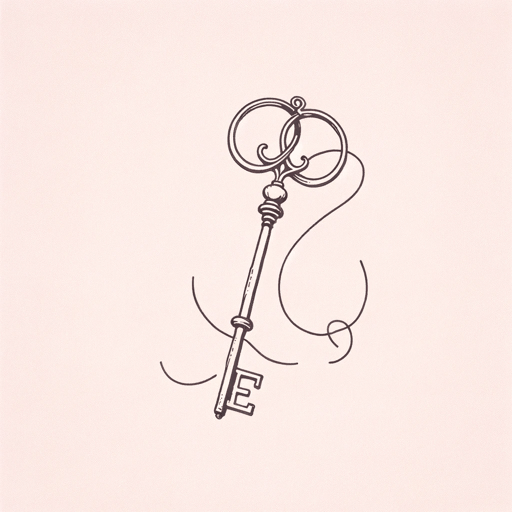
The Old Curiosity Shop
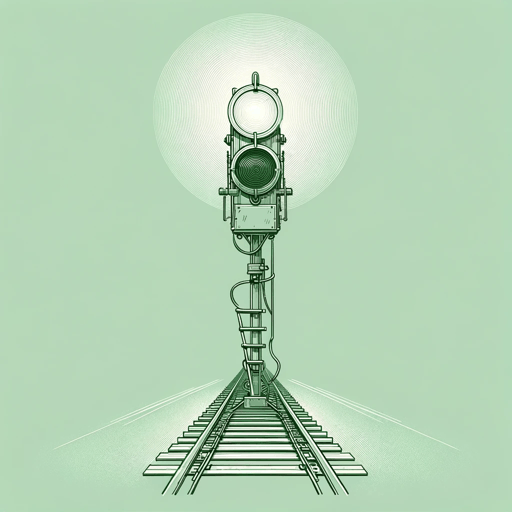
The Signal-Man
Featured Collections
9th-12th Grade Historical Fiction
View Collection
Audio Study Guides
British Literature
Historical Fiction
Victorian Literature
Victorian Literature / Period

A Tale of Two Cities Summary and Analysis
Home » Literature Explained – Literary Synopses and Book Summaries » A Tale of Two Cities » A Tale of Two Cities Summary and Analysis
A Tale of Two Cities – Introduction
A Tale of Two Cities is one of Charles Dickens’s most well-known works. The novel tells the struggles caused by the French Revolution and the dangers that come with blanket persecutions of people for their connections rather than for their deeds.
Although the protagonist and main character Charles Darnay is connected to the French aristocracy by blood, he has renounced all connection to the family and sympathizes with the oppressed citizens of France. However, some revolutionaries are unable to see past his lineage and he is doomed to suffer for the crimes of his ancestors despite his life’s actions.
A Tale of Two Cities Literary Elements

Type of Work: Novel
Genre: Historical Fiction
Published Date: 1859
Setting: London area and Paris area between the years 1775-1793
Main Characters: Darnay, Lucie, Doctor Manette, Sydney Carton
Protagonist: Charles Darnay
Antagonist: Madame Defarge
Major Thematic Elements: The ripple effect of sacrifice; Violence and oppression at the hands of revolutionaries; The promise of resurrection
Motifs: Doubles; shadows; imprisonment.
Exposition: The novel opens in 1775 and England and France are both suffering from social unrest.
Conflict: Madame Defarge is seeking revenge against Darnay while others strive to keep him protected from the guillotine.
Plot: Jumps through time in a forward-moving fashion.
Major Symbols: The broken wine casket; Madame Defarge’s knitting; The Marquis
Climax: In court, a letter is read aloud indicting Darnay as a member of a cruel aristocratic lineage—cementing the concept that Darnay may have to die or else his oppressor, Madame Defarge will.
Literary Significance of A Tale of Two Cities

Furthermore, being a work of historical fiction, the novel provides a look into what life was like during the French Revolution. Any individual connected to the aristocracy was seen to be worthy of execution so that the French lower class could rise out of oppression. This brutal time in French history did not allow any exceptions, creating a dire time for all of the French population. Having a compelling story that also visits this time in history is valuable to study and adds an enormous contribution to the English literary canon.
A Tale of Two Cities Book Summary

Once Lorry arrives at Dover, he finds Lucie Manette, a young orphan whose father is supposed dead. However, he has been discovered in France. Lorry is to escort Lucie to Paris. When they get there, they meet Defarge, who has been keeping Lucie’s father, Doctor Manette, safe. He had spent eighteen years in the Bastille and has gone mad. All he wants to do anymore is make shoes. Lorrie reassures Lucie that her love for her father will bring him back to sanity.
As Book the Second opens, the year is now 1780. A well-bred young man named Charles Darnay stands trial for treason—his charges include having divulged secret information to the kind of France. His lawyer, Stryver, pleads his case. His drunken colleague, Sydney Carton, assists and the court acquits Darnay. Lucie and Doctor Manette are there to act as witnesses against Darnay. After the trial, Darnay and Carton go to a tavern, where Carton reveals his disdain for his defendant since Darnay serves as a reminder of what Carton has given up in life—he feels disconnected from what he truly wants to be.
In France, the Marquis Evrémonde runs over a poor child with his carriage. Completely unphased about the suffering of the lower class at his hands, he carries on his way to await the arrival of his nephew, Darnay. When Darnay arrives, he tells his uncle that he plans to denounce his title and property that he is set to inherit from his uncle. Later that night, the Marquis is murdered by a knife through his heart by revolutionaries.
A year later, Darnay is working as a teacher in London. He has joined the many suitors vying for Lucie’s hand in marriage and confesses his love for her to Doctor Manette. In an effort to fully win over the trust of Doctor Manette, he tries to reveal his true identity as part of the Evrémonde lineage. However, Manette stops him and tells him to only do so if he is successful in winning over Lucie. Meanwhile, Carton has also confessed his love for Lucie, telling her that although he isn’t worth much, she helps him dream of a better life.

Back in London, the day of Darnay and Lucie’s wedding has arrived, and Darnay intends to keep his promise to Manette. He reveals his true identity and Manette starts to slip into old patterns of madness. He soon regains composure and joins his daughter and her new husband on their honeymoon. When they return, Carton makes peace with Darnay, who assumes Carton that he will always be welcome in their home. Years go by and Darnay and Lucie along with her father lead a relatively peaceful life. Lucie gives birth to two children, one of whom dies young. As the years pass, the social and political turbulence grows.
In 1789, the peasants storm the Bastille in Paris and the French Revolution officially begins. Aristocrats are murdered in the streets. Gabelle, the man upkeeping the Evrémonde estate is imprisoned. After three years have passed, he writes to Darnay begging to be rescued. Darnay decides to travel to France, despite the great personal risk he faces.
When Darnay arrives in Paris at the start of Book the Third, he is arrested. Lucie and Doctor Manette travel to France to attempt to rescue him. He sits in prison for over a year awaiting trial. Manette has considerable influence over the revolutionaries and uses this to Darnay’s advantage. Darnay is acquitted, only to be immediately arrested later that same night. His charges have come from Defarge and his vengeful wife, who despises his lineage tying him to the cruel Evrémonde family. Carton travels to Paris to aid in the fight to rescue Darnay.
When Darnay goes to trial, Defarge produces a letter that he discovered in Manette’s jail cell, which explains why Manette was imprisoned. Many years ago, the Evrémonde brothers (Darnay’s father and uncle) asked for Manette’s medical services tending to a young woman one of the brothers had raped and her brother, who had been stabbed by the perpetrator. Out of fear that Manette might report their crime, they then had him arrested. When the jury hears the contents of this letter, they are outraged at Darnay for being related to such heinous individuals. They sentence him to death within the next 24 hours.
Later that night, Carton is visiting the Defarge wine shop and overhears Madame Defarge plotting to have Lucie and her daughter executed with Darnay. It is revealed that Madame Defarge is the surviving family member of the man and woman who were the victims of the Evrémonde brothers’ crime. Carton has the Manettes immediately depart from France and tricks Darnay into switching clothes with him. Disguised as Carton, Darnay is able to escape with his family. Sydney Carton is executed under disguise as Darnay. When he dies, he feels fulfilled for finally having brought some meaning to his life.
A Tale of Two Cities
By charles dickens.
- A Tale of Two Cities Summary
It is 1775, and Mr. Jarvis Lorry is traveling to Dover to meet Lucie Manette . He tells her that she is not an orphan as she had been told from a young age. He now says that he will travel with her to Paris to meet her father, who has recently been released from the Bastille. Doctor Manette is housed in the Defarges' wine-shop and has lost his reason, but he starts to regain it when he meets his daughter and is transported back to London.
Five years later, Charles Darnay is tried in London on a charge of treason for providing English secrets to the French and Americans during the outbreak of the American Revolution. The dramatic appearance of Mr. Sydney Carton , who looks remarkably like him, precludes any positive identification and allows Darnay's acquittal. Darnay, Mr. Carton, and Mr. Stryver all fall in love with Lucie Manette, who was a tearful, unwilling witness for the prosecution. Although they all make an attempt to woo her, she favors Charles Darnay and marries him. Carton comes to her house alone and declares that while he expects no return of his love, he would do anything for her or for anyone whom she loves. Darnay has ominously hinted to Doctor Manette of his concealed identity, and he reveals to his father-in-law on the morning of his wedding that he is a French nobleman who has renounced his title.
In France, Darnay's uncle, Monseigneur, has been murdered in his bed for crimes against the French people. This means that Darnay is next in line to inherit the aristocratic title, but he tells no one but Doctor Manette. At the urgent request of Monsieur Gabelle, who has been arbitrarily imprisoned, Darnay returns to Paris. He is arrested as a nobleman and an emigrant and thrown into jail.
A spy named John Barsad drops into the Defarges' wine-shop to gather evidence regarding whether they are revolutionaries. They reveal practically nothing, although Madame Defarge is knitting a list of those whom she and the other revolutionaries intend to kill.
Doctor Manette, Miss Pross , Lucie, and her small child follow Darnay to Paris, where the Doctor is almost successful in using his power among the revolutionaries as a former Bastille prisoner--like the people, he was oppressed by the ruling regime--to secure Darnay's release. But Darnay is once again denounced by the Defarges, a charge which is made even stronger by Monsieur Defarge's revelation of a paper document that he found in Doctor Manette's former cell in the Bastille. The document recounts that Manette was arbitrarily imprisoned by the Evrémondes for having witnessed their rape of a peasant girl and the murder of her brother. Darnay is brought back to prison and sentenced to death.
Sydney Carton also has traveled to Paris because of the selfless love that Lucie Manette has inspired in him. He resolves to sacrifice himself to save her husband's life. He forces the help of John Barsad, having recognized him as Solomon Pross, the dissolute brother of Miss Pross. Carton overhears the Defarges discussing a plan to kill Lucie and her child, and he figures out that Madame Defarge is the surviving sister of the peasant girl who was raped and of the boy who was stabbed by the Evrémonde family.
Carton arranges for the Manettes to leave immediately. He uses his influence with Barsad (Pross), who also works as a turnkey, to get into Darnay's cell. He drugs Darnay and exchanges places with him, having Barsad carry Darnay out of the prison to safety.
Madame Defarge knocks on Lucie's door to arrest her, but the Manettes have already fled to safety. She is instead confronted with the extremely protective Miss Pross, who comes to blows with her and accidentally shoots her dead with her own gun. Darnay returns with the Manettes to London in safety. Carton dies in Darnay's place at the guillotine, satisfied with the knowledge of his good deed.

A Tale of Two Cities Questions and Answers
The Question and Answer section for A Tale of Two Cities is a great resource to ask questions, find answers, and discuss the novel.
The Dover Road 1775
The driver carried a gun to protect himself from highwaymen and robbers.
Look at the Attorney generals opening and closing statements in ch 3 and list 3 examples of hyperbole. What is the effect of the hyperbole how much do you trust his statements?
What does Mr.lorry mean when he says that he is a man of business?
Mr. Lorry's initial introduction of himself as the representative of Tellson's Bank hence a man of business.
Study Guide for A Tale of Two Cities
A Tale of Two Cities study guide contains a biography of Charles Dickens, literature essays, a complete e-text, quiz questions, major themes, characters, and a full summary and analysis.
- About A Tale of Two Cities
- A Tale of Two Cities Video
- Character List
Essays for A Tale of Two Cities
A Tale of Two Cities essays are academic essays for citation. These papers were written primarily by students and provide critical analysis of A Tale of Two Cities by Charles Dickens.
- Resurrection
- In the Absence of Hate
- Light vs. Dark Throughout A Tale of Two Cities
- Violence in A Tale of Two Cities
- Mirror Images: Sydney Carton and Charles Darnay
Lesson Plan for A Tale of Two Cities
- About the Author
- Study Objectives
- Common Core Standards
- Introduction to A Tale of Two Cities
- Relationship to Other Books
- Bringing in Technology
- Notes to the Teacher
- Related Links
- A Tale of Two Cities Bibliography
E-Text of A Tale of Two Cities
A Tale of Two Cities e-text contains the full text of A Tale of Two Cities by Charles Dickens.
- Book I, Chapters 1-4
- Book I, Chapters 5-6
- Book II, Chapters 1-9
- Book II, Chapters 10-14
- Book II, Chapters 15-24
Wikipedia Entries for A Tale of Two Cities
- Introduction
- Publication history
(92) 336 3216666
- A Tale of Two Cities
Background of the Novel
Historical context.
The last two decades of the 18 th century is marked as a turning point in the history of Europe. The French Revolution that began in 1789 changed the political landscape of Europe. With the rise of Napoleon Bonaparte, the citizens of France destroyed the centuries-old institutions of feudalism and absolute monarchy. The poor economic policies of the king and the discontent of the citizens with the French monarchy gave rise to the upheaval. King Louis XVI and his wife, Marie Antoinette, were executed.
Though the French Revolution could not achieve its ultimate goal and turn into a chaotic bloodbath, it played an important role in influencing the modern nation by portraying the inherent power of will of the common people.
The French Revolution, just like the American Revolution, was started to inculcate political liberty and rational thought among the masses. The ideals that the Enlightenment period of the 18 th century inculcated in the people were soon compromised when the Revolution of French citizens turned into “terror.” Moreover, the French Revolution was not restricted to France.
It also cast a sharp and long shadow on nineteenth-century industrialized Britain. With the advent of industrialization, Britain was divided into two classes: the rich and the poor. The Elite classes started fearing the oppressed class to start the Revolution and rebel against the monarchy; however, political compromises and wake-up calls by literary figures like Dickens attempt to stop the crisis in England.
Literary Context
The genre of historical fiction is founded by Sir Walter Scott. In order to display the historical war-time, Scott created the fictionalized characters in his novels. One of his famous novels on war-time history is Waverly.
Just like the distinct narrative voice of Dickens, Scott narrator also off and on explains, preaches, expounds, and makes jokes. The Middlemarch by George Eliot contains multiple plots and has realistic psychological details, therefore evolving the genre of historical fiction.
The novelists like Dickens, Scott, and Eliot used the genre of historical fiction to talk about the problems that were prevailing in their societies. They would use the events of the past to reveal the present to revolve around the crisis. The novels of these novelists discuss how individuals are created and shaped by political history and vice versa.
A Tale of Two Cities Summary
The novel opens in the year 1775 with Mr. Jarvis Lorry traveling on a mission to Dover to meet Lucie Manette. Mr. Jarvis Lorry is the employer of Tellson’s Bank in England. On his way to Dover, Mr. Lorry happens to meet a man who gives him a mysterious message, and Mr. Lorry replies with the message, “Recalled to life.” At Dover, in a restaurant, Mr. Lorry meets Lucie Manette and reveals that her father, Dr. Alexandre Manette, is alive, whom she thought had been long dead.
For 18 years, Dr. Manette had been clandestinely imprisoned in France. However, Monsieur Defarge, the old and former servant of Dr. Manette, has smuggled him out of prison and hid him in the upper story of the store. In Paris, Defarge now owns a wine shop, which is the center of the rebellious activities that result in the French Revolution. In the meantime, Madame Defarge, wife of Monsieur Defarge, enlists the name of the enemies of the Revolution by knitting. When Lucie and Mr. Lorry arrive to receive Dr. Manette, they find him in a dark corner, spontaneously making shoes. He has been left insane by prison. They receive him lovingly and return to London.
During their return to London, Lucie and Dr. Manette met Charles Darnay, the French aristocrat. He does not withstand the policies of his family against the working class and leaves France to go to England.
The story jumps to the year 1780. Charles Darnay is standing trial in London for spying. Lucie and Dr. Manette also attend the trial. Mr. Stryver is a defense lawyer of Charles Darnay. However, his associate Sidney Carton, a drunk and bored-looking man, win the case. Carton ruins the credibility of the witness by pointing out his resemblance to Darnay.
The wealthy aristocrats of France ignore the misery of poor people who are dying due to hunger and are staggering in luxury. The carriage of Marquis St. Evremonde, a wealthy aristocrat, irresponsibly runs over a child and kills him.
When he reaches his castle, he meets Charles Evremonde, his nephew, who has returned from England. Charles Evremonde is actually Charles Darner. In the meeting with his uncle, he abandons his association with his family. When Marquis is sleeping in his luxurious room that night, he is murdered.
Charles Darnay, Sydney Carton, and Stryver being impressed with Lucie, frequently pay their visit to Dr. Manette and Lucie. When Mr. Stryver decides to ask Lucie for marriage, he is warned by Mr. Lorry that his proposal will not be likely to be accepted by Dr. Manette and Lucie. Similarly, Carton admires Lucie for how she proved to be a person who changed his life by making him believe that he still has scraps of goodness hidden inside him, despite the ruined past he has.
Charles Darnay asks Dr. Manette’s permission to marry his daughter Lucie. Moreover, he wants to tell him his real name; however, Dr. Manette refuses to know until the day of the wedding. After the wedding, he is upset and feeling alone when his daughter and son in law go for honeymoon, Dr. Manette setbacks into his madness and starts making shoes. Mr. Lorry comforts him to recover, and the other day he was all fine and wants Mr. Lorry not to tell Lucie about the episode when she returns. Lucie and Charles Darnay give birth to a daughter.
The story again jumps to the year 1789. To destroy the monarchy, Defarge leads the rebellious peasants in Bastille. He investigates the old cell of Dr. Manette and discovers a letter written by Dr. Manette in a chimney. They later use this letter against him. The French Revolution was at its peak, and the new state has been declared. However, the citizens are growing extremely fierce and capture the aristocrats and kill them by execution. Charles Darnay goes to Paris when he receives a letter from his servant, Gabelle, asking for his help. However, Darnay is taken into prison.
To rescue Darnay, Lucie and Dr. Manette go to Paris and join Mr. Lorry, who has been there on a Bank Business. The 18 years of imprisonment make Dr. Manette a local hero. With his influence, he gets a trial for Charles Darnay; however, it takes a year. Lucie walks near the prison every day in the hope that Charles Darnay may see her. With evidence of Dr. Manette, Charles Darnay is freed. However, on that very night, he is again imprisoned by the charges carried by Madame Defarge and Monsieur Defarge.
Jerry Cruncher and Miss Pross have also come to help Dr. Manette and Lucie Manette. On the streets of Paris, they encounter Solomon Pros, the brother of Miss Pross. Jerry recognizes him as John Barsad, who was a witness of the allegation against Charles Darnay in the trial in England. Carton also appears and forces Barsad to cooperate with him in helping Charles Darnay or else he will reveal him as a spy.
At the second trial of Charles Darnay, Madame Defarge shows the court a letter written by Dr. Manette that she previously found in a chimney. In the letter, Dr. Manette wrote how the father and uncle of Charles Darnay – Evremonde’s brothers – abused a peasant girl and to protect themselves imprisoned Dr. Manette. Darnay is sent back to prison with the sentence to death. Dr. Manette loses his consciousness, thinking that his letter has caused the death of Charles. Moreover, Sidney Carton overhears the conversation of Madame Defarge, who has resolved to eliminate the line of Evremonde by killing Lucie and her daughter. At that spot, she also revealed to be the sister of a peasant girl and boy whom Evremonde abused and killed.
Carton makes a plan with Mr. Lorry to immediately arrange a carriage for everyone to escape for England and handover his identity paper to him. With the help of Barsad, Carton goes into the prison where Charles is imprisoned. He drugs him and switches his clothes with him. Thinking that Sidney has lost his consciousness due to overdrinking, Barsad takes Charles, disguised as Sidney Carton, to the carriage arranged by Mr. Lorry. Mr. Lorry, Dr. Manette, Lucie, her daughter, and Charles Darnay leave for England. They do not know that Sidney has replaced himself with Charles Darnay.
Soon after their departure, Madame Defarge shows up at the apartment of Dr. Manette to kill Lucie. However, before she could get in and know that Lucie has fled to England, Miss Pross stops her at the gate. The two start arguments and Madame Defarge takes out her pistol to threaten Miss Pross but shoots herself. The sound of a gun deafens Miss Pross.
While moving to the place of execution, in place of Darnay, Carton holds the hand of a young lady who has been accused of wrongly. He dies, realizing that the sacrifice he has made for Lucie is the greatest thing he has done in his life ever.
A Tale of Two Cities Characters Analysis
Sydney carton.
Sidney Carton is the most vigorous character in the novel A Tale of Two Cities. At the beginning of the novel, he appears to be a drunk and lazy lawyer who aggregates a little concentration in his life. For him, his existence is nothing but supreme waste and claim that he does not care for anything or anyone. However, the readers realize that there is a deep feeling inside Sidney Carton that he wants to articulate it but is unable to do.
Though, in his conversation with Charles Darnay, who has been recently proved guiltless, comments about Lucie. However, his tone was sardonic and bitter and let down his growing interest and developing feelings for Lucie. Ultimately, he gathers courage and confesses his feelings for Lucie to her. Unknowing that Lucie and Darnay are soon going to marry, he proposes his love for Lucie and also claims that he is not worthy of her. This event changes the life of Sidney Carton and makes the basis for the sacrifice that Sidney makes for Lucie at the end of the novel.
Madame Defarge
Holding an act of ruthless revenge, Madame Defarge symbolizes the turmoil of the French Revolution. In the initial chapter of the novel, the readers find her sitting in the chair of the wine shop, knitting quietly. Nevertheless, her outward inactiveness contradicts her persistent desire for revenge. Along with her knitting the clothes, she also knits the names of her revolutionary enemies in her “mental register.”
The real wildness of Madame Defarge is shown when Revolution breaks with the full force. The way terror and chaos destroy Paris, Madame Defarge turns on Lucy and invades both the physical and psychological space of Lucie. At first, she enlists the name of Lucie and her memory into the register of people who are meant to die in the Revolution. She then breaks into Lucie’s apartment to see Lucie mourning the death of her husband, Charles Darnay and then kills her.
Dickens points out that the ruthlessness and hatefulness of Madame Defarge are not inherent but is the result of suffering, oppression, and tragedy she faced at the hand of Evremondes. Though Lucie and Charles Darnay have not done any harm to her, they both are related to Evremondes: Darnay by blood and Lucie by marriage. But still, Dickens does not approve the retributive policies of justice of Madame Defarge, and therefore the readers do not feel any sympathy for her.
The oppression of aristocrats has mage Madame Defarge, an oppressor; likewise, the victims of the oppression of Madame Defarge will turn out oppressors as well. Madame Defarge dies with the shot of her own gun. Through this, Dickens symbolizes that the revengeful attitude that Madame Defarge embodies turns out to be self-damning.
Charles Darnay (a.k.a. Charles Evrémonde)
After renouncing his connection with the Evremondes, Charles Darnay abandons his family and position as the French aristocrat and goes to England. Though Darnay supports the revolutionary ideal of human liberty, he is not a radical revolutionary like French masses. He symbolizes the middle position between the mistreatment practiced by the aristocracy and the lethal anger displayed by the revolutionaries.
Charles Darnay displays a heroic character of obligation and justice when trying to help the oppressed peasants and endangers his own life by helping Gabelle. But Charles also deceives himself by thinking that he can change the power and make the Revolution a positive change in France. Moreover, Charles is not able to see the potential of Sidney Carton and is guided by his wife, Lucie, to believe in the potential of Sidney Carton. Darnay is the representative of virtuous but imperfect humanity.
Lucie Manette
She is the daughter of Dr. Alexandre Manette and wife of Charles’ Darnay. She resurrects or restores her father back to life after eighteen years of imprisonment. She has the qualities of devotion, innocence, and enduring love. In the novel, she is the main figure which symbolizes goodness and laces a “golden thread” that binds together an essential group of people against the cruel forces of politics and history. She also displays religious faith. She believes in Sydney Carton when no one else believes in him. It is her kindness that inspires Sidney for his utmost deed of sacrifice.
Dr. Alexandre Manette
He is an accomplished physician who lived in France and has been imprisoned for 18 years in Bastille. The unjustified imprisonment makes him lose his mind. He embodies a horrible psychological shock of oppression from subjugation. Lucie’s love “resurrects” or restores him to his life. Manette also represents the idea that suffering can also turn into a strength. When he goes back to Paris to rescue his son in law, he gains the authoritative position in the French Revolution. To return Charles Darnay’s favor of resurrection, Manette saved him in the trial. But his old letters again lead to Charles’ execution. He ultimately becomes a tragic figure and falls into madness. The life of Manette shows that individuals are always entrapped in the strong forces of history.

Monsieur Defarge
He is the former servant of Dr. Mannete and smuggles him from the prison. He owns a wine shop that he uses to organize the revolutionaries of the French Revolution. Monsieur Defarge, like his wife Madame Defarge, is aggressively dedicated to dethroning dictatorship and retaliating discrimination. However, he does not support his wife’s planning to kill Lucie Manette. Due to this characteristic of mercy, Defarge becomes a symbol of the French Revolution that failed. The revolution lost its vision and turned into terror and chaos.
Jarvis Lorry
With the development of the plot of the novel, the character of Jarvis Lorry changes from a purely pragmatic and minding-one’s-own-business to an intense and loyal person who devotes his life to protect the family of Dr. Manette and thus become a member of Manette’s family. When Mr. Lorry first meets with Lucie, he asserts that “I had no feelings and that all relationships I hold with my fellow-creatures are mere business relations.”
Indeed, Mr. Lorry is a dedicated and hardworking employee who, on behalf of the bank, risks his life by making a dangerous journey to France. He explains his decision by saying that “if I were not prepared to submit to a few inconveniences for the sake of Tellson’s, after all these years, who ought to be?” however, his actions strongly contradict his words. He time and again claims that he is only concerned with his business; he shows great love and affection to the Manette’s family. It is Lorry who helps Dr. Manette when he lapses into madness after Lucie’s marriage.
He explains the episode to Dr. Manette by saying that he is narrating the case of a hypothetical patient. The end of the life or Mr. Lorry is described in the vision of Sidney Carton as “the good old man, so long their friend, in ten years’ time, enriching them with all he has, and passing tranquility to his reward.” The character of Mr. Lorry symbolizes the life of someone who lives conferring on the integrity and principles of both personal and professional life.
Jerry Cruncher
He is a worker of Tellson’s Bank. He is a short-tempered, gruff, illiterate, and uneducated person. He has the second source of his earnings by doing a job of a “Resurrection-Man.” He digs up the graves and sells the dead bodies to a scientist for experiments.
She is Lucie’s maid who raised her. She is a tough, gruff, and loyal servant. As she is a symbol of loyalty and order, she is a foil to Madame Defarge – the one who is an epitome of chaos and disorder.
Marquis Evrémonde
He is the French aristocrat and the uncle of Charles Darnay. He is the embodiment of inhumanity and supports the brutal caste system. He displays no sign of humanity in the novel and wants all peasants of the world to terminate.
Mr. Stryver
He is a determined lawyer. He wants to climb the social ladder by marrying Lucie Manette. He is a proud, bombastic, and foolish person.
John Barsad or Roger Cly
John Barsad and Roger Cly are the same person but switch their roles according to the need of the situation. In England and France both, he swears to be loyal to the state, and all his actions are inspired by patriotism. He spies for the British under the name Roger Cly, while in Paris is named as John Barsad. He claims to a person of a high reputation. However, he is involved in crafty planning.
He is the servant of Evremondes and is charged with the allegation of keeping the estate of Evremondes after the death of Marquis Evremonde. The revolutionaries imprisoned him, and he wrote a letter to Charles Darnay for him. This letter makes Darnay visit France and save him.
Themes in A Tale of Two Cities
Resurrection and transformation.
The novel A Tale of Two Cities By Charles Dickens illustrates the possibility of transformation and resurrection. Charles Dickens, in the novel, declares that resurrection and transformation are possible on a personal level, as well as social level. The death/sacrifice of Sidney Carton not only restores the peaceful life of Charles Darnay but also of Lucie Manette and Dr. Manette and Sidney Carton himself. Carton rises to the status of heroism by providing himself with execution. He becomes a Christ-like figure who restores and rescues the lives of others by his death. Even he gives meaning and value to his life. Moreover, at the end of the novel, the narrative suggests that the life of Sidney Carton – like Christ’s life – will be resurrected as Sidney Carton gains immortality in the hearts of people whom he died for.
Moreover, the novel also asserts that the destruction of the old Monarchy of France is a way to the new and beautiful Paris that Carton envisions during execution. Though Carton spends most of his life in idleness and sloth, his final deed shows the human potential for better change. Though most of the novel describes the cruelness of aristocrats and outrageous peasants both, it also delivers the belief that this violence will pave the way for a better society.
The theme of resurrection Dr. Manette is also called forth by Mr. Lorry, who sends a secret message saying that “recalled to Life.” According to this, the 18 years long imprisonment of Dr. Manette is considered as death. The love of Lucie restores Dr. Manette’s life and supports the notion of rebirth.
The Inevitability of Sacrifice
The themes of resurrection are associated with the theme of the necessity of sacrifice. The resurrection reinforces the idea that for the attainment of happiness, sacrifice is necessary. This theme, like the theme of resurrection, is also applicable to both personal and national life. For instance, the French Revolution in France portrays the idea that a democratic and liberal can be established only with a high coast. In order to bring the change, personal loyalties and affection must be sacrificed.
Similarly, when Charles Darnay is arrested for the second time by the revolutionaries, the guard reminds Dr. Manette of the predominance of the interest of the state against the personal interest. A similar lesson is given to Monsieur Defarge by Madame Defarge when he shows his devotion to Dr. Manette. Lastly, the transformation of Carton into a man of moral worth is only possible when he sacrifices his old self. He not only rescues his friend but also guarantees his rebirth by choosing to die.
The Propensity to Fierceness and Tyranny in Revolutionaries
The novel, A Tale of Two Cities, illustrates the Dickens’ uncertain approach to the French Revolution. Though he supports the causes that give rise to the French Revolution, he highlights the wickedness of the revolutionaries as well. Dickens profoundly understands the dilemma of the French peasantry and stresses on their necessity for freedom.
The chapters in the novel that deals with the oppression of Marquis Evremonde effectively show an image of malicious upper classes that blatantly abuses and subjugates the poor class. Though Dickens denounces this subjugation, he also denounces the strategies of the poor classes to gain liberation against it. The peasants do not affect the Revolution truly by fighting against the barbarism with barbarism. Instead, they only give rise to the chaos they suffered themselves.
While depicting the mobs, in the novel, Dickens makes a standpoint and proves it. The scene in which the revolutionaries sharpen their weapons and dance at the execution of the aristocrat is marked as morbid. The apt view of Dickens is illustrated in the last chapter in which he says that “Sow the same seed of rapacious license and oppression over again, and it will surely yield the same fruit according to its kind.” The revolutionaries are turning from oppressed to oppressors. Indeed, the French Revolution is a symbol of resurrection and transformation, and he also highlights the violent act stating it to be opposing it causes.
The French Revolution is caused by class conflict and social unrest in France. The ruling class and the monarchs have done nothing but spent their lives in luxury and wealth. A Tale of Two Cities sarcastically spoofs the affectations of the aristocrats by showing how four servants are busy serving a cup of chocolate to their master.
The narrator says, “Deep would have been the blot upon his escutcheon if his chocolate had been ignobly waited on by only three men.” The French aristocrats are not only lazy and spoiled, but they are also brutal and do not regard the lives of poor peasants. After killing a child under his carriage, Monseigneur heatless tells the poor peasant that he “would ride over any of you very willingly, and exterminates you from the earth.” Moral complexity is added to the novel as Dickens does show not only the brutality and oppression of the upper class but also shows the violence of the lower class.
The theme of justice presents in the novel through the institutions that are responsible for serving justice and as well as through the individuals who want to attain justice outside the courtroom. In the novel, the imprisonments and the trials represent justice. Though the legal systems are designed to provide justice to the masses, the prisons and courts, most of the time, punish the innocent people. As the legal system failed to provide justice, the individual seeks it outside it. When Gaspard’s son is killed, he realizes that the legal system will never give him justice against the strong and powerful aristocrat, thus killing Marquis in his bed. Similarly, Madame Defarge has been scheming against the Evremonde’s family for years because she knows that the legal system cannot stand against the wealth and power of Evremondes.
Oppression and Revolution
The novel A Tale of Two Cities is based on the French Revolution that started in France in 1789. In the novel, Charles Dickens shows how the oppression of the rulers of France nourished wrath in the masses that ultimately resulted in the rebellion. This process is depicted through the character of Marquis, Evremonde, his treatment with the common people. He killed a child and was not ashamed of it.
Though the reasons for common people to revolt against the brutal aristocrats are justifiable, and the ideals of equality, liberty, and fraternity of the French Revolution were highly praised, Dickens seems to be more pessimistic about it. He shows that the revolutionaries fight against oppression and violence with further oppression and violence. This symbolizes that no matter who is in power, whether common people or the aristocrats will fall prey to the pull to use complete power and suppress others. In short, Dickens illustrates that the way oppression causes Revolution, Revolution, also cases oppression. The cycle can only be broken when mercy and justice are practiced.
Secrecy and Surveillance
In the novel, A Tale of Two Cities, every character seems to have a secret. The forgotten history of Dr. Manette is detailed in his hidden letter; the secret profession of Jerry Cruncher; the attitude of Mr. Lorry regarding his profession; the past of Charles Darnay; the underground activities of Madame Defarge and Monsieur Defarge.
The prevailing political instability at the counter results in this secrecy. In Book One, Chapter Three, the narrator points out that “A wonderful fact to reflect upon, that every human creature is constituted to be that profound secret and mystery to every other. A solemn consideration, when I enter a great city by night, that every one of those darkly clustered houses encloses its own secret; that every room in every one of them encloses its own secret; that every beating heart in the hundreds of thousands of breasts there, is, in some of its imaginings, a secret to the heart nearest it.”
The French aristocrats and the commoner both have spies to find out what their enemies are up to. Both sides inflict harsh punishments once they suspect anyone is spying on them. In such circumstances, no one trusts anyone and suspects everyone. To survive, they all feel the necessity to keep secrets.
Fate and History
Lucie Manette and Madame Defarge identify with the Fates – the mythological goddesses who actually control the “threads.” Lucie is titled as the “golden thread,” whereas Madame Defarge is seen as constantly knitting in the novel. The novel A Tale of Two Cities is concerned with the theme of human destiny due to the presence of these two “Fate” characters. The novel deals with how history shapes the fate of the individual. In the novel, Dr. Manette and Charles Darnay try to change their destinies. Charles makes his way to England and tries to escape the cruel history of his family; however, circumstances made him go to France and face the consequences of his family’s past. Similarly, Dr. Manette uses his connection and influence to rescue Charles Darnay; however, he forgets his own letter that causes his execution. Dickens suggests that forces of history cannot be defeated by political influences but by self-sacrifice.
A Tale of Two Cities Analysis
The novel A Tale of Two Cities is an account of the main conflict between Charles Darnay and Madame Defarge. Charles Darnay wants to break his connection with his family, whereas Madame Defarge wants to hold him responsible for the sins of his family and punish him. The conflict between Madame Defarge and Charles Dafarge embodies the characteristics of the French Revolution. On the one hand, the French Revolution was a response to the injustices done to the peasants’ class over the years; on the other hand, this Revolution causes the death of many innocent people who have not done anything wrong.
Being in association with the institution of exploitation was enough to execute a person. In the novel, Charles Darnay is sentenced to death because he is the son and nephew of the Evremonde’s brothers. The plot of the story is structured in the past before the action of the story begins. The two Evremonde’s brothers abused a peasant girl and brother and then killed him. To eliminate any witness, they also imprisoned Dr. Manette. At the end of the novel, Madame Defarge turns out to be the sister of the abused girl.
The readers learn about the causes of Madame Defarge’s action at the end of the novel. However, they have been driving the plot and reflect that how history discloses. The chaotic Revolution does not start all of a sudden; it is the result of the decades’ old exploitation and injustices by power. Likewise, the crimes that were committed years before by the old generation haunted the new generation and held them accountable for it.
Abstract ideas and concepts in a literary text are represented by objects, characters, and figures. Following are the symbols in the novel A Tale of Two Cities by Charles Dickens
The wine shop of Madame Defarge and Monsieur Defarge is the center where revolutionary planning is going on secretly. The wine in the novel symbolizes the strong power of the French Revolution. The revolutionaries, drunk on power, turned from the freedom fighters into the wild beasts on the streets murdering everyone. The deep red color of the wine shows the red color of the blood. When the wine drops from the container, the people rush towards it. It shows how these people are bloodthirsty. Just like the wine everywhere on the streets when the sailor could not transport it to the shop properly, after the Revolution, blood is everywhere.
Golden Thread and knitting
Lucie Manette and Madame Defarge identify with the Fates – the mythological goddesses who actually control the “threads.” Lucie is titled as the “golden thread,” whereas Madame Defarge is seen as constantly “knitting” in the novel. Lucie tries to connect the people around him and is the source of their bondage, whereas, Madame Defarge plans to separate them by knitting their names in the mental register. The novel A Tale of Two Cities is concerned with the theme of human destiny due to the presence of these two “Fate” characters. The novel deals with how history shapes the fate of the individual.
It is the machine designed to execute the people who are sentenced to death. It is one of the everlasting symbols of the French Revolution. The guillotine in the novel shows how the chaos created by the Revolution is institutionalized. It shows how the life of humans is cheap, and murdering has become so easy and emotionless. The guillotine is the death of the ideals of the French Revolution: equality, fraternity, liberty, or death.
Footsteps and Shoes
Lucie hears the footsteps of all the people coming into the lives of Manette’s family. These footsteps symbolize fate. It shows how the fate of Lucie is connected with people coming into her life. Similarly, in his madness, Dr. Manette is always seen as making shoes. Shoes are the symbol of the inevitable past.
The Marquis
The character of the Marquis Evrémonde is an archetype of wicked and corrupt social institutions. He exploits the lives of peasants and is completely indifferent to their sufferings. Marquis is a symbol of the brutal aristocrat and cruelty that drives the peasants to revolt against them.
The recurrent images, structures, and literary devices in a literary text are called Motifs. The emphasis on the idea helps develop the major themes of a work. The following are the motifs in the novel A Tale of Two Cities by Charles Dickens.
The very opening words of the novel suggest that the narrative of the novel is centered on the double. The novel opens with the words: “It was the best of times; it was the worst of times.” Likewise, the plot of the story is based on the “two cities”: London and Paris. Moreover, Dickens also doubled the characters to highlight the main theme of the novel. The two important female characters in the novel act totally opposite to each other. Madame Defarge is an evil character, while Lucie is loving and affectionate.
Dickens does not compare the two cities or characters by placing them opposite to each other, and he also creates the twins that make the plot of the novel melodramatic. The character of Darnay resembles Sidney Carton in looks. Carton saves the life of Sidney twice by taking advantage of his resemblance to Charles Darney.
Imprisonment
The characters in the novel are struggling against some sort of imprisonment. In the case of Dr. Manette and Charles Darnay, the struggle is evident as they are kept in prison in the jails of Paris. However, the novel also suggests that past memories also serve as the function of prison. Dr. Manette cannot get over his memories of the torturing past he spent in prison. Similarly, Sidney Carton spends much of his life thinking of harsh memories of the past.
Setting of the Novel
The very title of the novel indicates the two settings of the novel. The novel is set in London and Paris. The main action of the novel starts in the year 1775 with Lucie Manette discovering that her father, Dr. Manette is not dead but had been in prison for the last 18 years and ends with the Carton’s sacrifice to the Manette’s family in 1793. The key events of the plot occur in the year 1757 (before the novel begins). This year, Dr. Manette was arrested by the Evremondes. Due to the two settings, Dickens incorporates many storylines occurring at both places simultaneously. All these storylines are brought together in the last part of the novel, where every character of the novel is seen in Paris.
The two settings give a chance to Charles Dickens to compare and contrast the two cities. The novel criticizes both cities differently. London, in particular, and England in general, are portrayed as conservative, old fashioned, and at odds with the times. The narrator voices Dickens by comparing England to a father who “did very often disinherit his sons for suggesting improvements in laws and customs.”
On the other hand, Paris is portrayed as a place of high tension and is on the peak of chaos, for example, and the narrator describes Saint Antoine in the first chapter as “a narrow winding street, full of offense and stench.” It is the place where the violence of the Revolution is at peak. This setting is dominated by the muskets, cannons, and smoke and fire along with the masses that are bloodthirsty.
The style of the novel A Tale of Two Cities is grandiose. The narrator is omniscient who can see both the past and future. The narrator uses his perspective to comment on human nature and foreshadows the upcoming events. The style of the novel also contributes to the outcome of unfolding history. The style also dominates when the narrator describes the prophetic vision of Sidney Carton about the future of Paris.
The novel has a threatening and philosophical tone. All over the novel, the narrator foreshadows the uncountable sufferings this to come. The narrator also employed images that help to create a dark and threatening tone.
Point of View
The point of view of the novel A Tale of Two Cities has a third-person omniscient. The events of the plot are recounted by the all-knowing and all-seeing narrator. The narrator also provides an understanding of the feelings and thoughts of the characters. The point of view helps to provide a thorough perspective on the historical events that occur in different places. It also allows the panoramic view of all the events taking place in the two cities: London and Paris.
The novel A Tale of Two Cities belongs to the genre of historical fiction. Though the novel was published in 1859, the main plot of the novel is set in 1775, the years before the French Revolution. The opening line of the novel gives a sense of the time to the reader:
It was the best of times; it was the worst of times,
it was the age of wisdom; it was the age of foolishness,
it was the epoch of belief; it was the epoch of incredulity…
The plot of historical fiction is set before the time it is actually written. It provides a critical view of the events of the past and helps the readers to think more critically than the facts given by historians.
More From Charles Dickens
- David Copperfield
- A Tale of Two Cities
Charles Dickens
- Literature Notes
- A Tale of Two Cities at a Glance
- Book Summary
- About A Tale of Two Cities
- Character List
- Summary and Analysis
- Book 1: Chapter 1
- Book 1: Chapter 2
- Book 1: Chapter 3
- Book 1: Chapter 4
- Book 1: Chapter 5
- Book 1: Chapter 6
- Book 2: Chapter 1
- Book 2: Chapter 2
- Book 2: Chapter 3
- Book 2: Chapter 4
- Book 2: Chapter 5
- Book 2: Chapter 6
- Book 2: Chapter 7
- Book 2: Chapter 8
- Book 2: Chapter 9
- Book 2: Chapter 10
- Book 2: Chapter 11
- Book 2: Chapter 12
- Book 2: Chapter 13
- Book 2: Chapter 14
- Book 2: Chapter 15
- Book 2: Chapter 16
- Book 2: Chapter 17
- Book 2: Chapter 18
- Book 2: Chapter 19
- Book 2: Chapter 20
- Book 2: Chapter 21
- Book 2: Chapter 22
- Book 2: Chapter 23
- Book 2: Chapter 24
- Book 3: Chapter 1
- Book 3: Chapter 2
- Book 3: Chapter 3
- Book 3: Chapter 4
- Book 3: Chapter 5
- Book 3: Chapter 6
- Book 3: Chapter 7
- Book 3: Chapter 8
- Book 3: Chapter 9
- Book 3: Chapter 10
- Book 3: Chapter 11
- Book 3: Chapter 12
- Book 3: Chapter 13
- Book 3: Chapter 14
- Book 3: Chapter 15
- Character Analysis
- Doctor Alexandre Manette
- Lucie Manette, later Darnay
- Charles Darnay
- Sydney Carton
- Therese Defarge
- Ernest Defarge
- Jerry Cruncher
- Character Map
- Charles Dickens Biography
- Critical Essays
- Women as the Central Characters
- The French Revolution
- Famous Quotes
- Film Versions
- Full Glossary
- Essay Questions
- Practice Projects
- Cite this Literature Note
Summary and Analysis Book 2: Chapter 2
Jerry is told to take a note to Mr. Lorry at the Old Bailey law court and to stay there until Mr. Lorry needs him. After arriving at the Old Bailey and giving the doorkeeper the note to deliver to Mr. Lorry, Jerry makes his way into the crowded courtroom. The court is hearing a treason case, punishable by the grisly sentence of being drawn and quartered. The accused, Charles Darnay , stands quietly and calmly before the crowd until he catches sight of Lucie and Doctor Manette , who are witnesses against him. The spectators follow his eyes and are touched by Lucie's expression of fear and sympathy for Darnay.
Dickens uses the courtroom scene to vilify the British legal system, with the Old Bailey embodying the uncompromising harshness of the law. Charles Darnay's case in particular highlights the bloody nature of criminal sentences: If found guilty, he will be drawn, half hanged, eviscerated while still alive, beheaded, and cut into pieces.
While such a sentence is gruesome in itself, more disturbing is the avid interest the courtroom spectators take in Darnay's fate. The man who describes the sentence to Jerry speaks "with a relish"and the "eager faces"of the crowd stare at Darnay with an "Ogreish"fascination. Dickens points out that such an interest in a condemned man is "not the sort that elevated humanity."
As Dickens shows repeatedly throughout the novel, crowds can bring out the basest natures of people. Interestingly, the one thing capable of elevating the sensitivities of the crowd is the sight of Lucie Manette's concern and pity for the prisoner.
Old Bailey London's historic main criminal court on Old Bailey Street.
Tyburn public hangings in London took place at gallows called the Tyburn Tree until 1783.
pillory a device consisting of a wooden board with holes for the head and hands, in which petty offenders were formerly locked and exposed to public scorn; the stocks.
a trap a hinged or sliding door in a roof, ceiling or floor, which lifts or slides to cover an opening.
Bedlam the Hospital of St. Mary of Bethlehem, a London insane asylum, where Londoners went to watch the mentally unstable for entertainment.
Previous Chapter 1
Next Chapter 3

A Tale of Two Cities
Charles dickens, everything you need for every book you read..

IMAGES
VIDEO
COMMENTS
A Tale of Two Cities Full Book Summary. The year is 1775, and social ills plague both France and England. Jerry Cruncher, an odd-job man who works for Tellson's Bank, stops the Dover mail-coach with an urgent message for Jarvis Lorry. The message instructs Lorry to wait at Dover for a young woman, and Lorry responds with the cryptic words ...
Analysis. "It was the best of times, it was the worst of times…". The year is 1775, a time that the narrator describes through a set of contradictions: wisdom and foolishness, belief and disbelief, optimism and doubt, light and darkness, hope and despair. The narrator compares this historical era to his own present moment in Victorian England.
The year is 1775. On a mission for his employer, Tellson's Bank, Mr. Jarvis Lorry travels to Dover to meet Lucie Manette. On his way, Mr. Lorry receives a mysterious message and replies with the words "Recalled to life." When they meet, Mr. Lorry reveals to Lucie that her father, Dr. Alexandre Manette, who she thought was dead, is still alive.
This first chapter presents the sweeping backdrop of forces and events that will shape the lives of the novel's characters. From the first paragraph, Dickens begins developing the central theme of duality. His pairings of contrasting concepts such as the "best"and "worst"of times, "Light"and "Darkness,"and "hope"and "despair"reflect the mirror ...
Book Summary "It was the best of times, it was the worst of times," Charles Dickens writes in the opening lines of A Tale of Two Cities as he paints a picture of life in England and France. The year is late 1775, and Jarvis Lorry travels from London to Paris on a secret mission for his employer, Tellson's Bank.
Chapter 1: The Period. The year is 1775 and the settings are London and Paris, two lands ruled by monarchs. England is on the brink of the American Revolution. The French Revolution seems inevitable, with trees waiting to be converted to guillotines and the spirit of rebellion silently infecting the countryside.
Complete summary of Charles Dickens' A Tale of Two Cities. eNotes plot summaries cover all the significant action of A Tale of Two Cities. ... Book the First, Chapters 1, 2, and 3 Summary and Analysis
Overview. A Tale of Two Cities, published in 1859, is a historical drama written by Charles Dickens. The backdrop of the novel takes place in London and Paris prior to the French Revolution. The novel, told in three parts, has been adapted into numerous productions for film, theater, radio, and television. In 1775, a banker named Jarvis Lorry ...
A Tale of Two Cities Book Summary. The novel opens in the year 1775 during exceptional social unrest in both England and France. A man named Jerry Cruncher, who is working for Tellson's Bank, intercepts the mail coach with a message for Jarvis Lorry. The message simply reads "Wait at Dover for Mam'selle.". Lorry tells Jerry to return to ...
E-Text of A Tale of Two Cities. A Tale of Two Cities e-text contains the full text of A Tale of Two Cities by Charles Dickens. Book I, Chapters 1-4; Book I, Chapters 5-6; Book II, Chapters 1-9; Book II, Chapters 10-14; Book II, Chapters 15-24; Read the E-Text for A Tale of Two Cities…
A Tale of Two Cities, novel by Charles Dickens, published both serially and in book form in 1859. The story is set in the late 18th century against the background of the French Revolution. Although drawn from history, the novel offers more drama than accuracy. Learn more about A Tale of Two Cities in this article.
A Tale of Two Cities is a historical novel published in 1859 by Charles Dickens, set in London and Paris before and during the French Revolution.The novel tells the story of the French Doctor Manette, his 18-year-long imprisonment in the Bastille in Paris, and his release to live in London with his daughter Lucie whom he had never met. The story is set against the conditions that led up to the ...
Key Facts about A Tale of Two Cities. Full Title: A Tale of Two Cities. When Written: 1859. Where Written: Rochester and London. When Published: 1859. Literary Period: Victorian era. Genre: Historical novel. Setting: London and Paris. Climax: Sydney Carton's rescue of Charles Darnay from prison.
A Tale of Two Cities Summary. The novel opens in the year 1775 with Mr. Jarvis Lorry traveling on a mission to Dover to meet Lucie Manette. Mr. Jarvis Lorry is the employer of Tellson's Bank in England. On his way to Dover, Mr. Lorry happens to meet a man who gives him a mysterious message, and Mr. Lorry replies with the message, "Recalled ...
At home before work one morning, the sight of his wife praying frustrates Jerry. He complains that she prays against his prosperity and tells her he won't tolerate it. After breakfast, Jerry and his son walk to Tellson's and station themselves in front of the bank before it opens. Soon the bank calls Jerry to deliver a message.
Three passengers sit in the carriage. Everyone is suspicious of each other. When he hears an approaching horse, the coach driver stops the carriage: it's a messenger seeking one of the passengers, Mr. Jarvis Lorry of Tellson's Bank. Mr. Lorry recognizes the man as Jerry Cruncher, who works odd-jobs for Tellson's.
Jerry is told to take a note to Mr. Lorry at the Old Bailey law court and to stay there until Mr. Lorry needs him. After arriving at the Old Bailey and giving the doorkeeper the note to deliver to Mr. Lorry, Jerry makes his way into the crowded courtroom. The court is hearing a treason case, punishable by the grisly sentence of being drawn and ...
Analysis. Outside a wine shop in the poor Parisian suburb of Saint Antoine, a cask of wine accidentally falls and breaks in the street. Everyone in the area scrambles to drink the runoff: cupping their hands, slurping it out of gutters, licking it off the fragments of the broken cask. It turns into a game with dancing and singing in the streets.